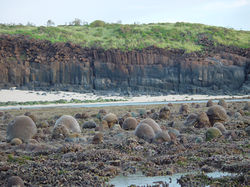Natalie Rosser
Exploring the Wonders of Science
 |  |  |  |  |
|---|---|---|---|---|
 |  |  |  |  |
 |  |
Bio
A little bit about me
I’m a passionate marine biologist driven by the wonder of 'why?'. I'm immensely fascinated by mass coral spawning, and I've been studying the causes and consequences of biannual coral spawning on Indo-Pacific reefs for 14 years. At a broader level I'm endlessly interested in marine ecology and evolutionary biology, and understanding the processes that drive speciation and biodiversity. My background in genetics allows me to answer ecological questions using a genetic approach. I hold a PhD in Molecular Ecology from the University of Western Australia. I worked in the private sector for several years as a senior consultant and adviser, managing multi-million dollar monitoring programs. I've worked for Universities in research and teaching, and I'm currently a visiting fellow and lecturer at the University of Wollongong. I love getting out into the field, and I have an ADAS commerical dive certification. I’ve received numerous awards and grants for my research, with projects and publications that you can learn more about below.

My Research
Understanding the evolutionary origins and maintenance of biodiversity are key challenges for conservation scientists, because high genetic diversity guards against future contingencies, such as disease or climate change. My research provides us with a better understanding of the way genetic diversity is originated and maintained in the marine realm. The strength of my research lies in the integration of biology, ecology and genetics, affording me a unique perspective on the systems I am studying. Learn more about my ongoing research projects below.

New insights into mass coral spawning
Mass coral spawning is absolutely spectacular, when hundreds and hundreds of corals release eggs and sperm en masse. In Australia it occurs over a few nights once a year, when the water is warm and the winds are light, typically in spring (Oct/Nov) on the east coast, and in autumn (Mar/Apr) on the west coast. Or so we thought. But then we discovered that on some reefs in Western Australia there are two mass spawning events each year: in both autumn and spring. It turns out that corals are not spawning twice, instead there are two reproductive cohorts – one that spawns in autumn and one that spawns in spring. My genetic study of Acropora samoensis at Barrow Island in WA showed that these reproductive cohorts were highly genetically differentiated, to the point of virtually being two separate species. Because these corals spawn at different times of the year, they are no longer breeding with each other and are therefore evolving into different species. This is exciting because, in effect, we are witnessing evolution (and speciation) in action.

Understanding what makes corals tick
The factors that control the timing of coral spawning are complex, and are a combination of environmental factors and genetics. Spawning time is influenced by seasonal weather cycles, lunar phase and sunset time. Research has identified numerous circadian-clock related genes that influence the lunar phase and time of day that corals spawn, but the genes that influence the seasonal timing of spawning are yet to be identified. However, during my PhD research I unexpectedly found that corals that spawn in autumn or spring are associated with different variations of a gene called PaxC. This is particularly interesting because the PaxC gene in corals is a precursor of Pax6, which plays a central role in eye development in mammals. Corals do not have eyes, but they do sense light, and in particular gametogenesis and spawning are influenced by changes in light intensity. So PaxC appears to be a very interesting gene in corals and the potential for it to influence the timing of spawning in corals in an exciting avenue for future research. The next phase of my research is to investigate the genes that influence the seasonal timing of coral spawning.
